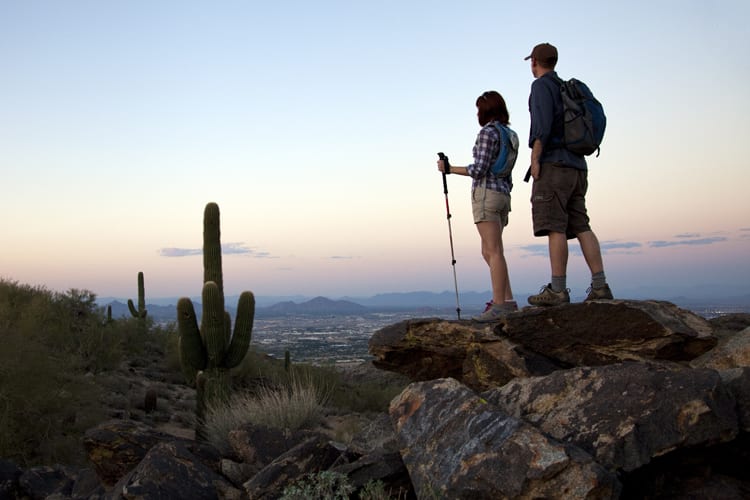Congratulations! You are moving to Arizona. If you have lived in another part of the country or the world up until this point, you may be used to a climate that holds more moisture. In fact, one of the most common comments you may hear about Arizona is that “it is hot, but it is a dry heat”. Why is this important?
The human body is comprised of up to 60% water and many of the body’s systems rely on water to function properly. In dry climates, such as that of Arizona, the dry air can be responsible for depleting the body’s moisture, simply through breathing it in. Respiratory problems are most common after an extended period of time in dry climates. These can present themselves as colds and sinus infections, the bacteria of which can lead to more serious illnesses like the flu.
When moving to a new location, how do you prepare for this type of climate change as to avoid any serious side effects? What are some tips for living with dry air?
Stay Hydrated
This method to combat dry air seems like a bit of a no-brainer, but it really is one of the easiest solutions. Hydrating from the inside out will help every one of your bodily systems, especially keeping your respiratory tract on track. Not only that, but drinking at least 64oz of water every day can help to improve your skin and keep it glowing, even in the hottest months. Find a large reusable water bottle and remember to keep refilling it throughout the day. Remember, by the time you feel thirsty, you are already starting to become dehydrated.
Humidify
If you have ever been victim to a dry-air induced nosebleed, look no further. Thanks to the wonders of technology, even the dryest of climates have a chance at redemption with the purchase of a humidifier. If you have never used one before, you are in for a treat. Humidifiers put moisture back into the air and are small enough to place in your home or office, depending on where you need it most. Even better, they come in both cool mist and warm mist varieties, depending on your preference.
Indoor Living
As beautiful as Arizona is, there are certain months where the heat can reach 120 degrees or more. Being out in the sun can be very dehydrating, not to mention cause major levels of skin damage if not properly protected. In these intense bouts of heat, it is best to minimize your outdoor time. Interestingly enough, there are many office buildings in the state that are fully equipped with garage parking, cafeterias, and if you are lucky, even a Starbucks. All of this is merely an adaptation to the extreme weather, leaving your day to day life relatively unphased. If you do plan on spending an extended period outdoors, make sure you have a hefty supply of water to accompany you.
Shorter Showers
Hydrating by drinking water is one thing, but not all water is created equal. Taking a long, hot shower at the end of the day can actually do more harm than good, as hot water and soap strip the skin. While cold showers are not particularly fun, consider taking a shorter shower in warm water with less soap to prevent excessive drying. Afterwards, reward your skin with a deeply emollient moisturizer to keep your skin supple.
Minimize Caffeine & Alcohol
Last on our list is to minimize your consumption of both caffeine and alcohol. A nice iced coffee or frozen margarita may seem like the perfect solution to a hot, dry day, but caffeine and alcohol are both culprits of dehydration. The more you drink, the more moisture is sucked from your body. If you do enjoy these types of beverages, just make sure you are supplementing them with a large glass of water, especially during the hottest months of the year.
Moving to a new state can be a stressful time in your life, but how to adapt to the new climate does not have to be a mystery. The dry climate of the southwest will not get the best of you if you come prepared with these tips and tricks. Arizona welcomes you with days full of sunshine and an extra water bottle or two!
Alyson Monaco is a published writer, expert in health and fitness, and professional dancer hailing from New Jersey. Her love of how the body works began through early dance training, which lead to a major in dance at internationally renowned Boston Conservatory. Aside from movement studies, she was trained extensively in kinesiology, anatomy, and nutrition.




